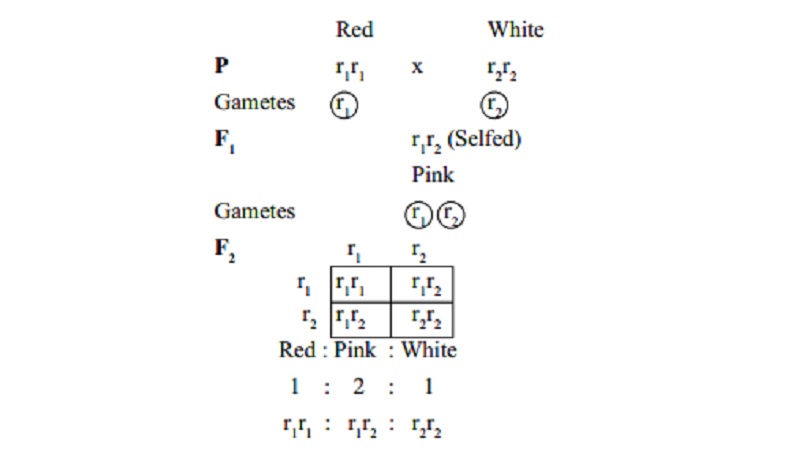Chapter: 11 th 12th std standard Bio Botany plant tree Biology Higher secondary school College Notes
Intermediate Inheritance (Incomplete Dominance)

Intermediate Inheritance (Incomplete
Dominance)
From Mendel's experiments it had been
established that when two alleles are brought together from two different pure
breeding parents, one of them completely dominates over the other manifesting
itself in the hybrid. Researches by many investigators revealed that in a
number of living organisms complete dominance was absent, the hybrid exhibited
an intermediate character as both the genes of the allelomorphic pair showed
partial expression.
Thus in incomplete
dominance or partial dominance
or intermediate inheritance or blending
inheritance the F1 hybrid does not resemble either of the parents. A very good example for this is the 4 `O' clock plant
Mirabilis jalapa studied by Correns
in 1906. A similar condition is seen in Antirrhinum
majus.
In Mirabilis
jalapa, there are two distinctive types of flower colours namely the red
and the white. Both the types are true breeding. When a pure-red flowered (r1r1)
variety is crossed with a pure white flowered (r2r2) one,
the F1 hybrids produce pink flower, a character which is intermediate between
red and white coloured flowers of the parental generation. This is because
neither red flower colour nor white is completely dominant over the other. When
F1 hybrids were selfed red, pink and white flowered varieties were obtained
respectively in the ratio of 1:2:1. This is the phenotypic ratio. Here the
genotypic ratio is also 1:2:1, producing one homozygous red, two heterozygous
pink and one homozygous white. The red and the white varieties breed true on
self fertilisation of the F2 individuals but the pink varieties on
selfing once again produce a phenotypic ratio of 1:2:1 proving the law of
purity of gametes.
Since neither of the parents is completely
dominant over the other, the symbol for Red parent is r1r1
and the white parent r2r2, and so naturally the genotype
of the hybrid is r1r2.
It has been observed in the given example
that there is blending of phenotypes - not genotypes and the alleles of the
genes are discrete or particulate. They appear blended in F1 but
have separated out in F2 generation.
Incomplete dominance is also called blending inheritance because both
the characters of the parental plants are mixed to give an intermediate
character which is different from that of the parents. But only the characters
are mixed with each other and not the alleles. In Mirabilis the r1r1 always produces red
coloured flowers and r2r2 produces white coloured
flowers, when they are combined, the intermediate colour namely pink is
produced. Because of this it is described as blending inheritance.
Related Topics